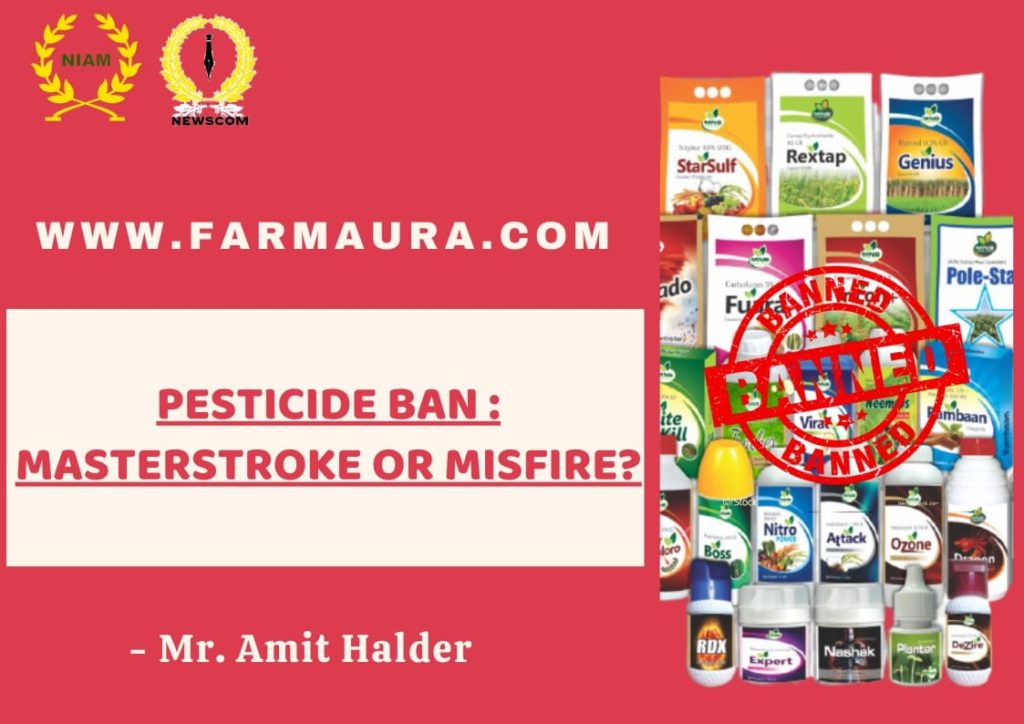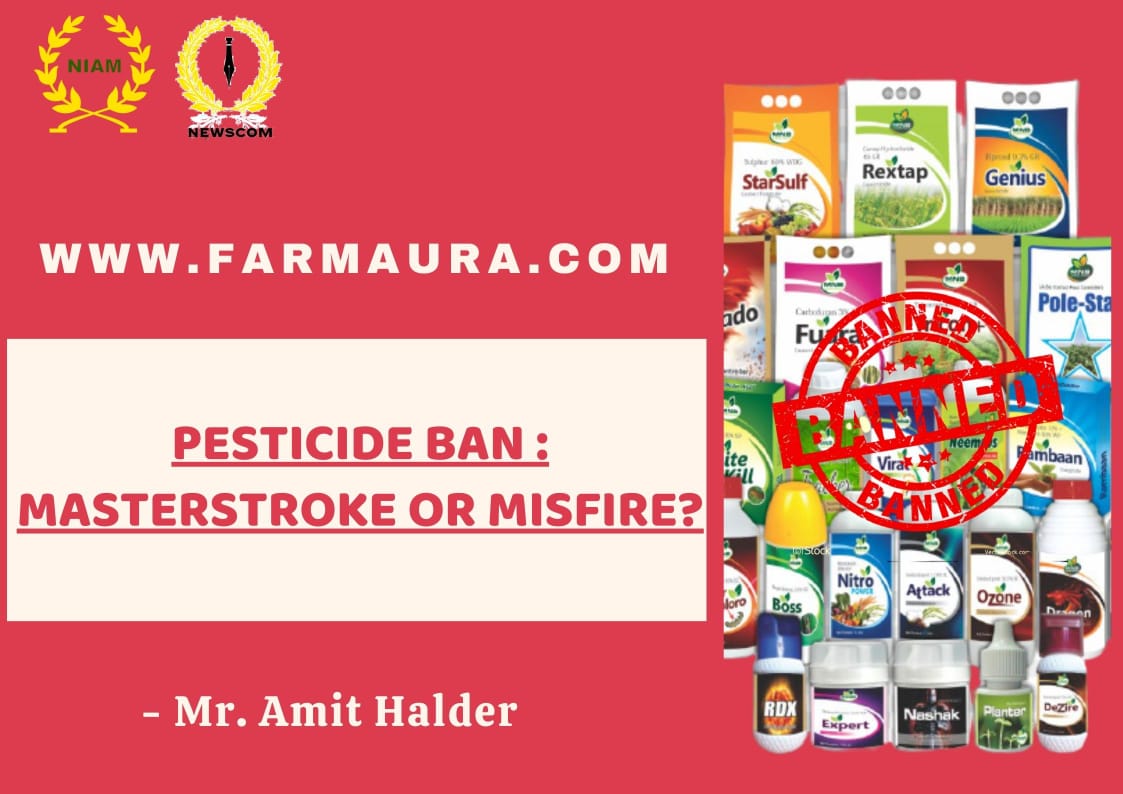
The government has drafted a plan to ban 27 pesticides out of 66, under reviewing hazardous pesticides. The expert committee in 2018 was successful in banning 18 pesticides, but now it is time for 27 more out of the review list. This time the list also includes the alternative formulations that can be used instead of these 27 pesticides. The listed popular molecules such as Acephate, Monocrotophos, 2,4-D, Carbofuran, Carbendazim, Atrazine, etc has been found to contaminate water bodies and underground water. Many of these are highly hazardous and have the potential to cause health issues like hormonal disbalance, carcinogenic and neurotoxic effects. These formulations are found to be causing health hazards to the humans, animals and honeybees which are very essential for the pollination process in the plants.
Already some of these highly toxic pesticides were addressed by state regulation earlier. For example, Monocrotophos was banned by Adilabad district, Ooty district and in the state of Maharashtra. The state of Kerala has already banned some of these pesticides such as Monocrotophos, Carbofuran, Atrazine, etc. back in 2011, on the grounds of public health concerns.
According to Pesticide Action Network, India (PAN) currently 289 pesticides are registered, and these 27 pesticides form less than 10 per cent of them. Hence banning these pesticides will not affect the cost of production as well as productivity. On the counterpart the pesticide producers claim that the proposed ban will hike costs for Indian farmers. The cost of alternative formulations will be unaffordable. If these pesticides are banned crop losses would break the farmers’ back.
The pesticide industry is not happy with the new draft of 27 pesticides and has strong objections with the expert committee which was constituted in July 2013. All these pesticides were highly effective and have been registered in India by the regulatory authority “Central Insecticide Board and Registration Committee” (CIB&RC). Since 1970 these generic pesticides were in use, meeting all scientific evaluations for safety and efficacy, backed up by scientific data. Malathion, the very same pesticide, which is proposed to be banned was extensively used by the government during the recent locust attack.
India is the world’s fifth-largest pesticide exporter sharing 9.5% of total world trade. India exports pesticides worth of 2,55,52 crore INR to different countries and these 27 pesticides comprise 70% of total export. Also, these 27 pesticides comprise 40% of the domestic market and will result in a 5,000 to 6,000 crore INR hit to the domestic business, according to The Pesticides Manufacturers and Formulators Association of India (PMFAI). The alternative formulations were sold at 1,200 to 2,000 INR per litre in comparison to 350 to 400 INR per litre for the existing pesticides.
Keeping in mind the industry, employment, and the farmers an investigation by a scientific panel including government agricultural scientists is the need of the hour. The decision of banning these pesticides is a masterstroke or misfire, how effective is the decision, the answer will unfold in the coming years.




